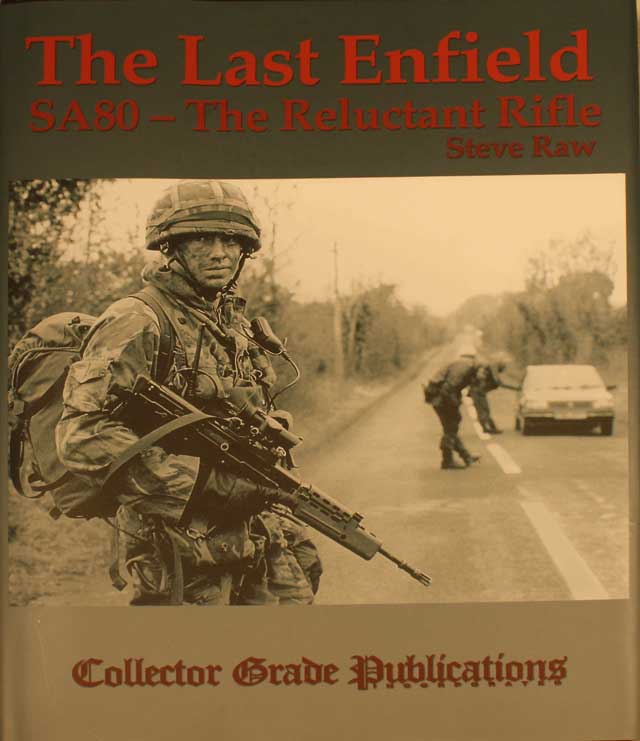When you have read "The Last Enfield" by Steve Raw, there won't be anything you didn't know about the British Army's current service rifle. It is a somewhat sad story, much like the early M-16's travails when bean counters redesigned it, only much worse. The M-16 survived to be possibly the best rifle in the world, but for the final version of the SA80? In the end it seems you don't hear many complaints about it from Afghanistan any longer, and if it is finally straightened out, it is almost a shame it is about to be replaced, but with what?

Weapon design was changing the world over at the time, and Britain was breaking new ground with a bullpup style stamped steel rifle. It is hard to believe they had so much trouble with it, Kalishnakov's were stamped and they were very reliable. The Steyr Aug was a bullpup, although not stamped, and their gun was successful. Steve follows every turn in the development, and his views as to why this happened seem to hit the mark. The rifle didn't fail because of lack of money, although in the beginning, this is what may have stumped it's development.
The story is a mixed one for the British. On the one hand, many engineers went out on a limb trying to come up with the best compromise in weight, length, and power. Then on the other, it seems that accountants and bureaucrats conspired to build the worst possible rifle. Add to that some intrigue with design theft from Armalite, terrible reliability in battle, and a rebuilding of the entire small arms inventory of the British Armed Forces by a German company and the result is something that you couldn't have made up.
Steve Raw is uniqely qualified to tell this story. Not only did he spend half his life in the Royal Marines, but became an armorer, and more than that, in 1989 became head of the Armorers' Branch of the Royal Marines. He has tapped the knowledge of many experts in the field to complete this volumn and has left no stone unturned.
But the best feature of the book would satisfy any machinery geek. There are detailed pictures of every variant and prototype with in depth explanations of all features and modifications. (And there were lots of those!) Included are detailed field stripping and armorer repair procedures with even the measurements for making the tooling. Notwithstanding it's problems, this is an interesting rifle, and even though it took an incredible long time to mature, it appears to be close to what it was meant to be back in the '70's. The rifle does seem to be incredibly vulnerable to sand and/or any other kind of environmental debris, the only advice being "Throw a bucket of oil at it every chance you get!"

In the end, Steve bemoans the loss of Enfield's manufacturing and engineering talent, expertise and facilities, despite their mistakes with the SA80. Enfield was an entity dedicated to keeping the country in weapons, something that is now lost to fewer and larger international corporations whose interests are global in scope. If the world goes to hell, and it has a number of times in the last 100 years, a country's weapons manufacturing and expertise need to be inside it's national borders, and answerable to the country's political leaders, or you are playing a dangerous game in a changing world. For England it may already be too late.
Published by Collector Grade Publications

